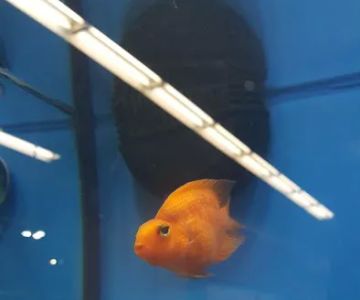How to Train a Dog to Stop Being Possessive Over Toys
Many dog owners face the challenge of a possessive dog, especially when it comes to toys. If your furry friend guards their toys with a level of intensity that makes you or others feel uneasy, it can be concerning. As a pet parent, you want to ensure that your dog feels secure and well-behaved while also learning to share and understand boundaries. In this article, we will delve into how you can train your dog to stop being possessive over toys using practical tips and techniques. By the end of this article, you'll have a clear understanding of how to address this behavior and create a more harmonious environment for both you and your pet.
Understanding Possessiveness in Dogs
Possessiveness in dogs is a natural behavior that stems from their instincts. Dogs, particularly those with a strong prey drive or protective instincts, may become overly attached to their toys as a means of claiming resources. This behavior is also common in dogs who feel insecure or anxious. When a dog feels the need to guard their toys, it can be a sign that they are unsure about their place in the household or their relationship with their human family members. Understanding the root causes of this behavior is key to addressing it effectively.
Why Does My Dog Get Possessive Over Toys?
Before jumping into solutions, it’s important to understand why your dog is possessive. There are several reasons a dog might exhibit this behavior:
- Insecurity: If your dog is feeling insecure or stressed, they may view their toys as a source of comfort and security. Guarding these objects helps them feel safe.
- Prey Drive: Dogs with a strong prey drive may treat toys as prey. Their instinct to "claim" their toys can translate into possessiveness.
- Resource Guarding: Some dogs may naturally guard resources like food, toys, or even their space. This is a natural instinct but can lead to undesirable behaviors if not managed.
- Lack of Socialization: Dogs who haven’t been properly socialized might struggle with sharing. If they haven't learned appropriate boundaries or how to interact with other dogs or people around their toys, possessiveness is a common outcome.
Step-by-Step Training to Address Possessiveness
Training your dog to stop being possessive over toys requires patience, consistency, and positive reinforcement. Here’s a step-by-step guide that can help:
1. Set Boundaries with Consistency
The first step in addressing possessiveness is setting clear boundaries. You want to ensure that your dog understands that toys are not "theirs" alone. Use a firm but calm tone when interacting with your dog around their toys. If they start to guard a toy, calmly remove it from them and don’t engage in a confrontation. Avoid yelling or punishing the dog as this could heighten their anxiety or reinforce negative behaviors.
2. Teach the “Drop It” Command
One of the most useful commands you can teach your dog is the "drop it" command. This helps to stop possessive behavior by teaching your dog to release objects voluntarily. To start:
- Choose a toy your dog is possessive about.
- Let them hold the toy for a moment, then show them a treat or another toy they really like.
- Say "drop it" in a clear, firm voice while gently but firmly removing the toy from their mouth.
- Reward your dog with the treat immediately after they release the toy. The key is to make the act of giving up the toy a rewarding experience.
Repeat this several times until your dog consistently responds to the command. This teaches them that giving up their toy results in something positive.
3. Gradual Exposure to Sharing
Next, start to expose your dog to situations where they need to share their toys. You can do this by gradually introducing other dogs or family members into playtime. It’s essential to supervise these interactions closely and intervene if your dog becomes overly possessive. Praise your dog when they behave well and share the toy with others. Over time, they will learn that sharing doesn’t take away from their enjoyment of the toy.
4. Reward Positive Behavior
Positive reinforcement is one of the most powerful tools in dog training. Whenever your dog demonstrates non-possessive behavior, such as willingly giving up a toy or playing nicely with others, reward them with praise, treats, or extra playtime. The more positive reinforcement they receive for sharing, the more likely they will be to repeat these behaviors.
5. Avoid Engaging in Possessive Behavior
In some cases, dogs may become possessive over toys due to how they have been reinforced in the past. If your dog has learned that being possessive gets them attention or rewards, it’s essential to avoid engaging in this cycle. When your dog starts guarding their toys, remain calm and don’t react. Wait for them to let go of the toy voluntarily before offering praise or rewards.
6. Use Multiple Toys to Distract and Redirect
If your dog is excessively possessive over one specific toy, try using multiple toys to divert their attention. Offer them a different toy to play with when they start showing signs of possessiveness. By redirecting their focus to a new toy, you can help them learn to be less fixated on one object.
7. Be Patient and Consistent
Training a dog to stop being possessive over toys doesn’t happen overnight. It takes time, patience, and consistency. It’s essential to stick to your training plan and remain calm, even when progress seems slow. Over time, your dog will learn to associate positive behaviors with sharing and will become less possessive of their toys.
My Experience with a Possessive Dog
I’ve dealt with a dog who was highly possessive of her toys. My dog, Luna, would growl and snap whenever anyone approached her favorite squeaky toy. This behavior was concerning, especially with young children in the house. However, with consistent training, we were able to teach Luna to share her toys without fear of losing them. It wasn’t easy, but the process was rewarding. By setting clear boundaries, teaching commands, and rewarding her when she behaved appropriately, Luna gradually stopped guarding her toys. Now, she happily shares her toys with both other dogs and family members, and we enjoy playtime together without the tension.
Final Thoughts
Training a dog to stop being possessive over toys is a process that requires patience and commitment. By understanding the root cause of your dog’s possessiveness, setting clear boundaries, and using positive reinforcement, you can help your dog become less protective of their toys. Remember, consistency is key. With time, your dog will learn that sharing is fun and rewarding, leading to a more balanced and happy pet.











